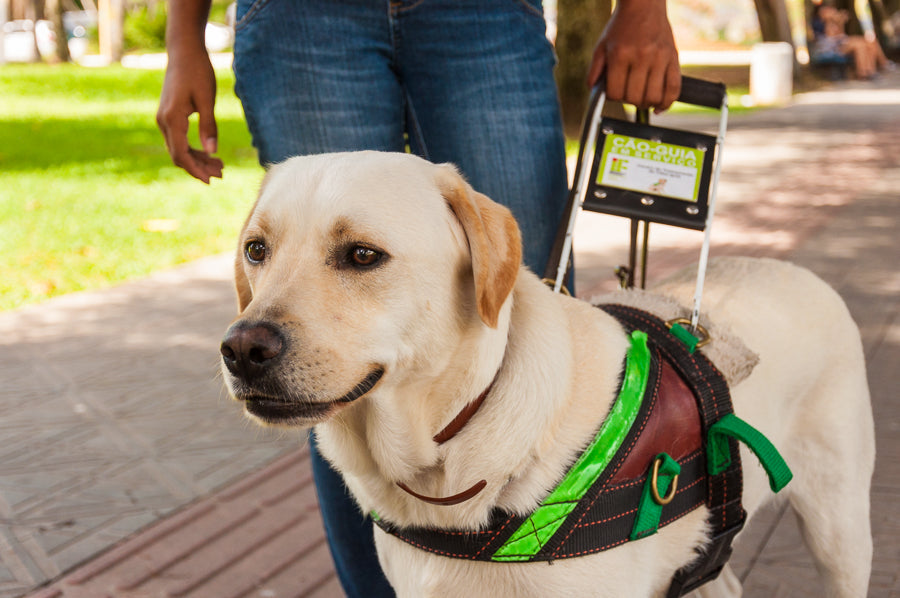Introduction
Guide dogs are more than just pets—they are highly trained companions that provide independence, safety, and emotional support to individuals with visual impairments. These incredible animals undergo rigorous training to navigate obstacles, follow commands, and ensure their handlers can move through the world with confidence.

In this 5,000+ word comprehensive guide, we’ll explore:
✔ What guide dogs do and who they help
✔ The history and evolution of guide dogs
✔ How guide dogs are trained (step-by-step process)
✔ The best breeds for guide work
✔ Legal rights and access for guide dog handlers
✔ How to apply for a guide dog
✔ Common misconceptions and FAQs
✔ How you can support guide dog organizations
Chapter 1: What Are Guide Dogs and Who Do They Help?
Definition of a Guide Dog
A guide dog (also called a seeing-eye dog) is a specially trained service animal that assists people who are blind or visually impaired. They help their handlers navigate streets, public transportation, and indoor spaces safely.
Who Benefits from Guide Dogs?
-
Individuals with total blindness
-
People with low vision
-
Those with progressive vision loss (e.g., due to glaucoma or retinitis pigmentosa)
-
Veterans with vision impairments from injuries
How Guide Dogs Improve Quality of Life
-
Increased independence – No longer relying solely on canes or human guides
-
Enhanced safety – Avoiding obstacles, stopping at curbs, and detecting dangers
-
Emotional support – Reducing anxiety and loneliness
-
Social interaction – Encouraging conversations and community engagement
Chapter 2: The History of Guide Dogs
Early Beginnings
-
First recorded use – 16th-century European woodcuts show blind people with dogs.
-
Formal training programs – Started after World War I to assist blinded veterans.
The First Modern Guide Dog Schools
-
The Seeing Eye (1929) – First U.S. school in New Jersey.
-
Guide Dogs for the Blind (1942) – One of the largest U.S. programs.
-
International expansion – Schools now exist in the UK, Australia, Japan, and beyond.
Chapter 3: How Guide Dogs Are Trained (Step-by-Step Process)
Stage 1: Early Socialization (Puppy Raising)
-
Breeder selection – Focus on intelligence, temperament, and health.
-
Puppy raisers – Volunteers teach basic obedience and socialization.
-
Duration: 12-18 months.
Stage 2: Professional Training
-
Obedience training – Mastering commands like "sit," "stay," and "forward."
-
Obstacle navigation – Learning to avoid low-hanging branches, stairs, and traffic.
-
Intelligent disobedience – Ignoring unsafe commands (e.g., refusing to cross a street if a car is coming).
Stage 3: Matching with a Handler
-
Two-week training camp – Handler and dog learn to work together.
-
Gradual independence – Starting in controlled environments before real-world practice.
Chapter 4: Best Dog Breeds for Guide Work
| Breed | Why They Excel |
|---|---|
| Labrador Retriever | Friendly, intelligent, adaptable |
| Golden Retriever | Gentle, eager to please, great stamina |
| German Shepherd | Highly trainable, protective instincts |
| Labrador-Golden Mix | Combines the best traits of both breeds |
Chapter 5: Legal Rights for Guide Dog Handlers
Americans with Disabilities Act (ADA) Protections
-
Public access rights – Allowed in restaurants, stores, and public transport.
-
Housing rights – No pet fees or breed restrictions.
-
Air travel – Covered under the Air Carrier Access Act.
Common Challenges & How to Advocate
-
Denied entry – Know how to politely assert rights.
-
Misinformation – Educate businesses on ADA laws.
Chapter 6: How to Apply for a Guide Dog
Eligibility Requirements
✔ Proof of visual impairment (doctor’s note)
✔ Mobility skills (ability to walk independently with a cane)
✔ Commitment to care (financially and emotionally)
Application Process
-
Research schools (e.g., The Seeing Eye, Guide Dogs for the Blind).
-
Submit medical and personal references.
-
Attend an in-person interview.
-
Complete team training.
Chapter 7: Debunking Common Myths About Guide Dogs
❌ Myth: "Guide dogs can read traffic lights."
✅ Fact: They judge safety based on movement and sound.
❌ Myth: "You can’t pet a guide dog."
✅ Fact: Distractions are dangerous—always ask the handler first.
Chapter 8: How You Can Support Guide Dog Organizations
-
Volunteer as a puppy raiser
-
Donate to training programs
-
Sponsor a guide dog in training
Conclusion
Guide dogs transform lives by providing freedom, safety, and companionship to those with visual impairments. From their rigorous training to their legal protections, these remarkable animals deserve recognition and support.
Want to help? Share this guide, donate to a guide dog school, or consider volunteering! 🐕🦺



Share:
Adopting a Turtle: A Comprehensive Guide to a Rewarding Experience
The Ultimate Guide to Traveling With Your Dog: Tips, Safety, and Adventures